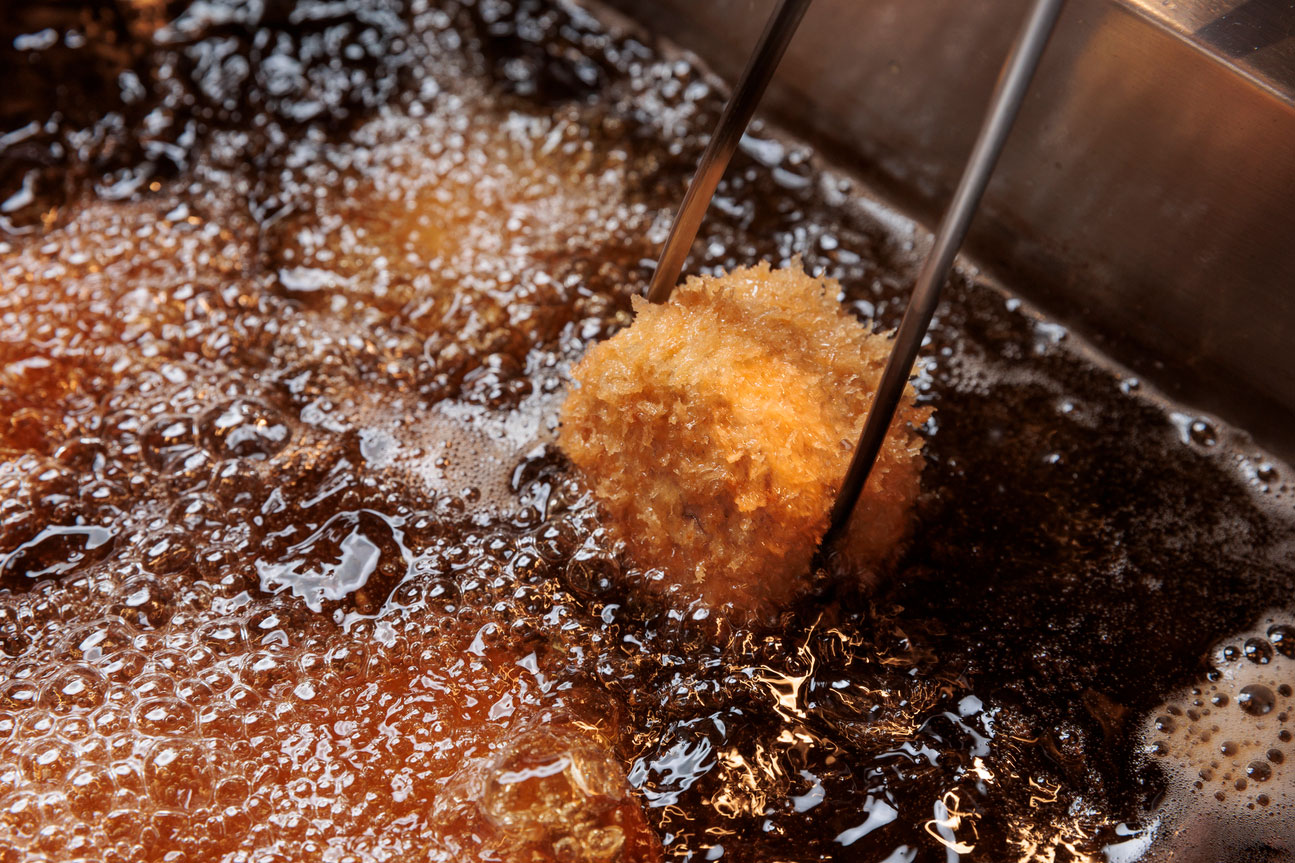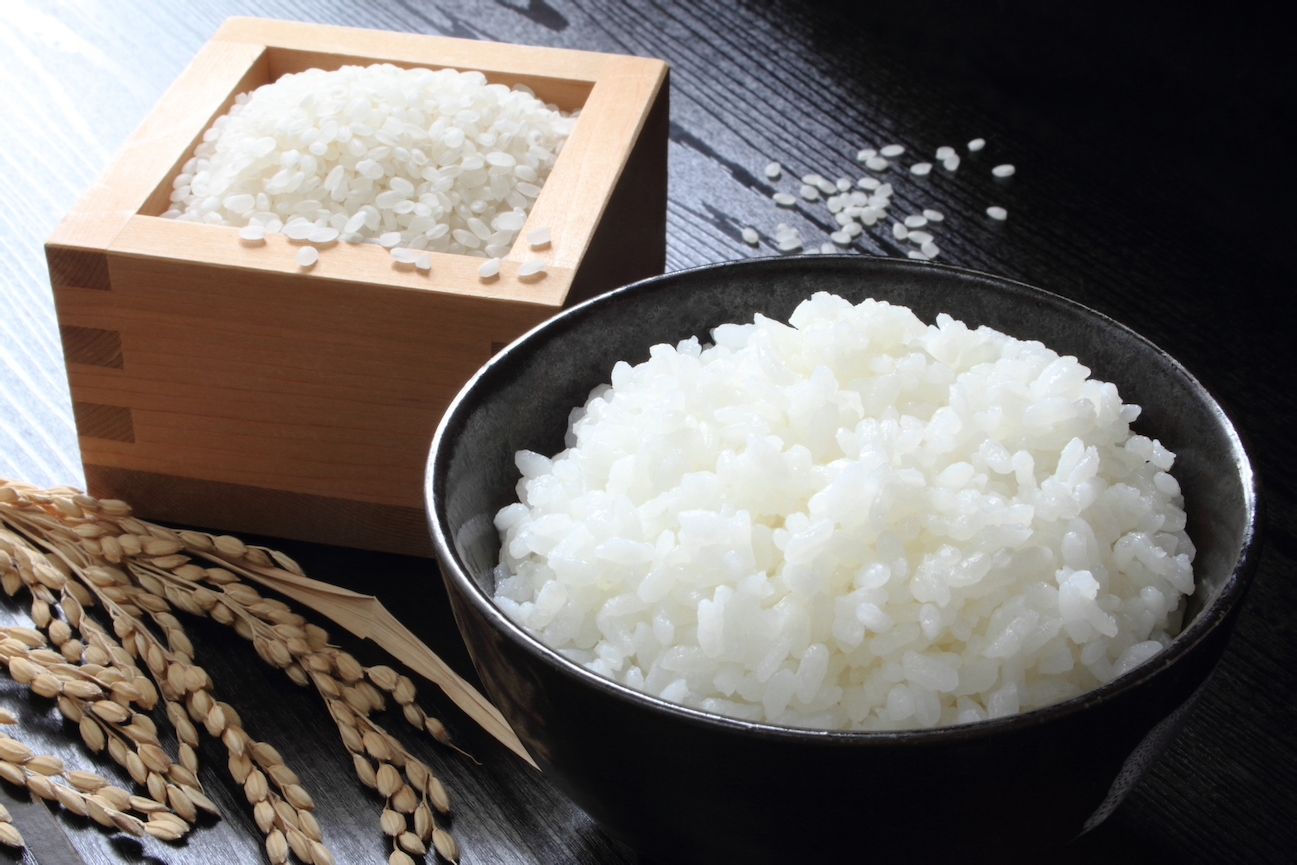
Why Tonkatsu Is So Delicious: Boutique Pork Brands in Japan
Generous cuts of pork, evenly breaded and deep-fried to perfection: When visitors to Japan are surveyed on the culinary highlights of their time in the country, tonkatsu is seldom far from the top of the list. Restaurants serving tonkatsu in traditional teishoku style, with rice and shredded cabbage on the side, are starting to pop up around the world.
What makes tonkatsu so delicious? Keeping the meat succulent and the breading crispy takes masterful frying, of course, but the flavor itself comes from the superb quality of the pork involved. There are hundreds of boutique pork brands in Japan today vying to offer the most exquisite and succulent cuts of loin, filet, rib eye, and more. We spoke to Daisuke Masugi, owner-chef of the gourmet tonkatsu restaurant tonkatsu.jp in Omotesando, Tokyo, about what makes Japanese boutique pork unique.

Daisuke Masugi, lifelong tonkatsu enthusiast, owner-chef of tonkatsu.jp in Omotesando, and untiring booster of Japanese boutique pork brands
“I’ve always loved tonkatsu,” says Masugi cheerfully. He particularly loves the sweetness and tenderness of the fat in a good pork loin or rib eye, and considers piping hot tonkatsu the most direct way of enjoying everything the cut has to offer. Even before opening the restaurant, he would eat it around 200 times a year. “When I see a tonkatsu sign, I have to go in—it’s a Pavlovian reaction.”
What differentiates tonkatsu from breaded cousins like schnitzel overseas? As Masugi explains it, schnitzel is a thinner filet, pounded flat, and then fried in a shallow layer of oil in a frying pan, while tonkatsu is a much thicker cut, completely deep fried. This puts the flavor of the meat itself front and center. At tonkotsu.jp, Masugi fries every piece of tonkatsu in two separate tanks of lard—one at a relatively low temperature, to cook the meat through evenly, and one at a higher temperature to give the breading its golden, crispy finish. In the case of fatty cuts like pork loin and ribeye, the final step also ensures that the fat deposits are melted to the sweet, silky consistency that connoisseurs crave.
“There’s a clear influence from tempura,” says Masugi. Like tempura, tonkatsu is technically steamed inside its breading. Tonkatsu is also traditionally eaten with a special sauce, similar to Worcestershire sauce—although many tonkatsu restaurants recommend specially selected salt as an alternative. tonkotsu.jp serves its tonkatsu with salt sourced from the Okinawan islands. “We recommend trying at least the first few bites seasoned only with salt,” says Masugi. “The boutique pork we use is of such high quality that it deserves to be savored in its own right.”
Japanese boutique pork brands, known as meigara-buta, are subject to strict quality control programs like the HACCP system and a traceability system that records the history of each piece of meat from production through to distribution. It’s hard to say how many boutique brands there are, although Masugi estimates the number at 800 or so. Each one pursues quality according to its own unique vision.
“According to Yasushi Kuwahara, one of Japan’s leading pork production experts, the taste of pork is decided 50% by breed, 25% by environment, and 25% by feed,” says Masugi. Producers differentiate their brands along all three axes, striving to raise pigs with something truly unique to offer. The result is a huge diversity of high-quality pork.

The sheer diversity of Japanese boutique pork is visible at a glance. Clockwise from left: Saddleback loin, Amagi Kurobuta top loin, Dorobuta filet
Dorobuta-brand pork, for example, comes from pigs raised at El Paso Ranch in the hills of Tokachi, Hokkaido. The animals have free run of a 30-hectare area, eating, sleeping, and playing as they please. They drink clear stream water, root in the mud for minerals, and feed on Tokachi produce, from pumpkins to steamed potatoes. Ranch owner Hideaki Hirabayashi sees his role as ensuring that the pigs enjoy a happy, stress-free life. The fact that this makes them more delicious is a bonus. Tonkatsu made from Dorobuta pork packs a weighty but tender punch of pure umami made even richer by the contrast with the crunchy, golden breading.
“Pigs are usually skittish around strangers, but the pigs at El Paso Ranch are so friendly they run right up and greet visitors,” says Masugi. “My encounter with Dorobuta pork and hearing this story was what originally piqued my interest in boutique brands.”

Dorobuta pork filet tonkatsu. Note the dense but silky texture.
Amagi Kurobuta, a boutique pork brand based in Shizuoka, takes a more data-driven approach. Owner Wataru Kaneko used to be a pork distributor, but eventually shifted to the production side of the business out of frustration that no one else was producing pork the way he thought it should be done. He tracks his product closely, testing indicators like oleic and linoleic acid levels on a weekly basis—far more often than most producers feel necessary—and adjusting his specially ordered pig feed as appropriate. The pigs themselves are pure Berkshire by breed, which is required to use the name kurobuta (“black pig”) in Japan. The result is pork with reservoirs of rich, sweet fat that melts in the mouth when served piping hot.

Amagi Kurobuta top loin tonkatsu. The layers of sweet fat are visible at a glance.
Masugi also offers Saddleback and Kofukubuta (“Happy Pig”) as examples of brands with on a unique philosophy whose products make the grade for inclusion on the tonkatsu.jp menu. Saddleback and Kofukubuta are both produced at the family-run Fukudome Small Farm in Kagoshima. Saddleback is also the name of a breed, a kind of pig from Germany known for its distinctive saddle-like markings; Kofukubuta is made using a mixture of Saddleback and other bloodlines. Fukudome Small Farm gives their pork feed that includes natto bacteria, which are good for the intestinal biome. The resulting meat is richly flavorful, with sweet layers of fat; juicy, but never heavy.
“The feed affects the taste of the pork,” explains Masugi. Kinako Buta from Miyazaki feeds their pigs kinako, sweet roasted soy flour, and this makes their meat sweeter. In Nagano, Azumino Genki Buta augments their pig feed with lactic acid fermentation, which gives the resulting meat a clean, crisp flavor that’s perfect for summer. (The true tonkatsu connoisseur chooses their cut of meat partly based on the season!)
Among Japan’s boutique pork brands, one growing international success story is JAPAN X, from the foot of Mount Zao in Miyagi prefecture, part of the Tohoku region. JAPAN X uses pigs with a high degree of Yorkshire in their bloodline, feeding them with custom-made high-quality feed that makes them ready for processing at 150 days instead of the usual 180. These two factors make for exceptionally tender pork. JAPAN X is already exported to several countries around Asia, and continues to expand.

JAPAN X pork is bred and raised on custom-ordered feed to be succulent and tender
Although Masugi does recommend savoring boutique pork tonkatsu teishoku-style, he’s a cheerful advocate for tonkatsu no matter how it’s served. “I’ll happily enjoy a tonkatsu sandwich from the convenience store,” he says. Katsu sando, as they are known for short, with juicy tonkatsu sandwiched between thick slices of bread, are among the many reasons Japanese convenience stores have devoted fans around the world. Masugi also enjoys a good katsu curry—Japanese-style curry and rice with sliced tonkatsu for extra heartiness—and the classic katsudon, with tonkatsu, sauteed onion, and egg simmered together in a sweetened dashi broth and served over rice, garnished with mitsuba (Japanese parsley) or pickled red ginger.

Katsudon: Tonkatsu, onion, and egg simmered in sweet dashi broth and served over rice. Note the traditional garnish of mitsuba (Japanese parsley)
Masugi believes that tonkatsu is a dish that presents pork at its absolute best, making it an ideal showcase for boutique pork brands.
“Because the pork is steamed inside its breading, the meat stays incredibly tender and juicy even as the sweet fat melts and runs,” he says. Diners at his restaurant from outside Japan often remark on how the juicy, flavorsome experience of quality pork tonkatsu has completely overturned their idea of pork meat as tough and dry and pork fat unappetizing.
Tonkatsu sits proudly at the intersection of quality Japanese pork meets traditional yet innovative cooking techniques. Why not try this peak dining experience for yourself?









